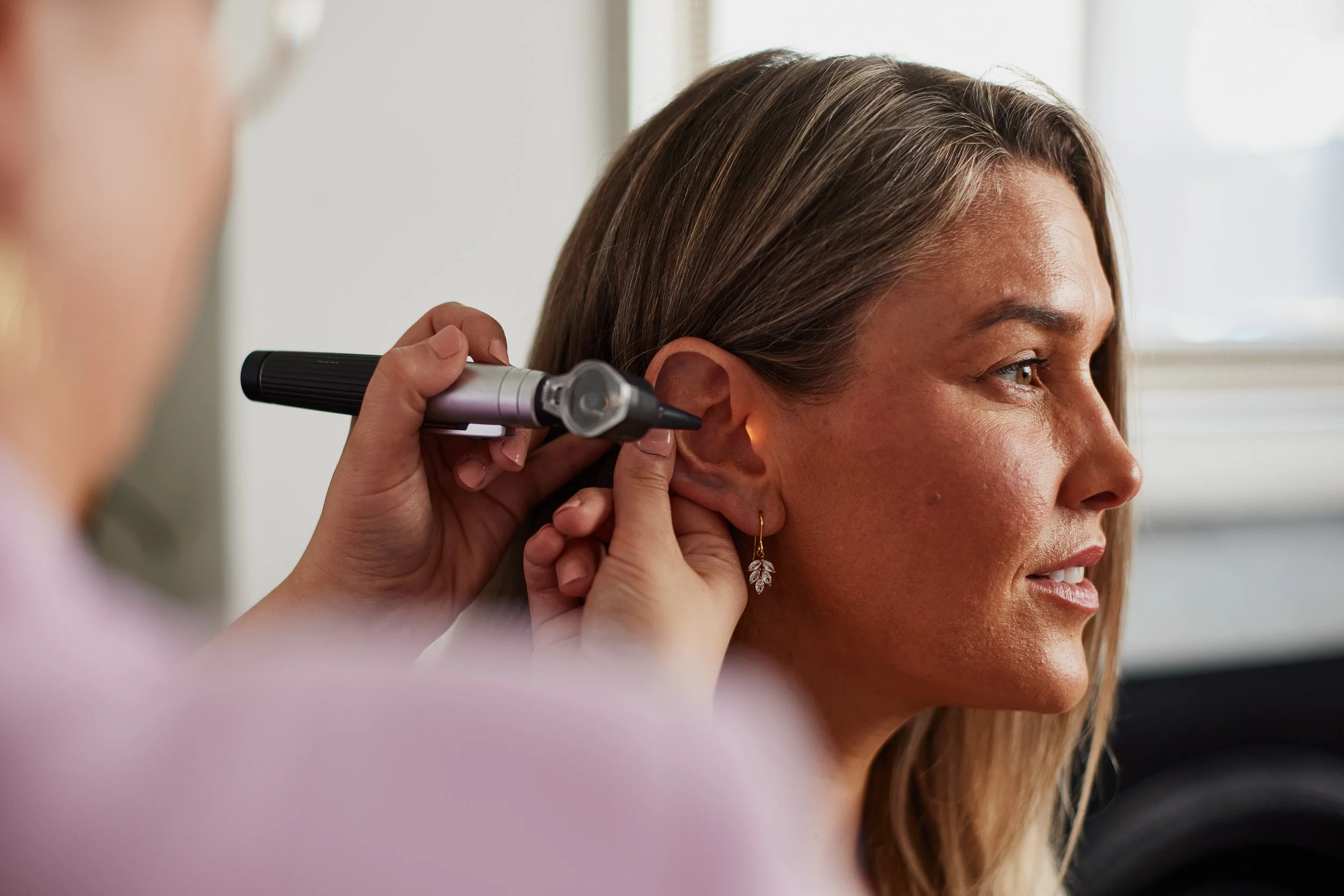Understanding Earwax – What It Is and Why We Need It
As an audiologist, the first part of assessing someone’s hearing is examining their ears visually. I use an otoscope (a light with a magnifying glass) to get a good look at the ear canal and eardrum. When I tell people I am about to do this, I am often greeted with an embarrassed look from the client. They will often say something such as, “Oh! I haven’t cleaned them out today!” or “I’m sorry if they are dirty!”
In this article, I want to address something important: the fact that earwax is a normal and healthy feature of our ears.
Table of Contents
This blog is all about what earwax is, why we have it, and why most people don’t need to be so quick to remove it.
TL;DR
1. What Is Earwax?
3. When Does Earwax Become a Problem?
6. So, What’s the Safest Way to Remove Earwax?
7. FAQ
8. Conclusion
What Is Earwax?
Earwax (scientifically known as cerumen) is naturally produced by tiny glands (the ceruminous and sebaceous glands) in the ear canals. It can have different appearances based on your genetics – for some people it is soft and dark brown or honey-coloured; for others it may be pale, dry and flaky. Some people may produce very little earwax, whilst others may generate large amounts. In normal quantities, earwax does not prevent sound from reaching the eardrum.
What Does Earwax Do?
One of the reasons we produce earwax is that it helps to protect our ears. Earwax can trap dirt and dead skin cells, preventing these from entering further into the ear canal to the more sensitive areas such as the eardrum. It has antifungal and antibacterial qualities to prevent infection. Earwax is also water-resistant (hydrophobic), which helps prevent moisture build-up in the ear canal.
There are natural oils in earwax, which help to keep the skin lining of the ear canal healthy by preventing dryness, cracking of the skin, irritation and infection. Finally, earwax has an acidic and bitter taste, which deters insects from spending time in there. For these reasons, having a little earwax is certainly not a bad thing or a sign of poor hygiene!
When Does Earwax Become a Problem?
A healthy ear canal is self-cleaning. The shape of the ear canal has a slight spiral shape, which helps skin and wax slowly migrate from the deeper parts of the canal to the opening. Most people don’t need to clean their own ears, other than gently washing the outer ear if any wax comes to the surface.
However, some people will produce more earwax than average. Too much earwax being produced causes it to be too heavy to migrate out on its own. This causes an accumulation of earwax known as ‘earwax impaction’. It is estimated that earwax impaction occurs in 10% of children, 5% of healthy adults, 57% of older patients in nursing homes, and 36% of people with an intellectual disability (Bird, 2003).
What Increases the Risk of Blocked Ears?
Earwax impaction is more likely in people who have narrow, curvy or hairy ear canals. The presence of foreign objects like hearing aids can also push earwax in further. Cotton buds are another culprit – instead of cleaning, they tend to push the wax in deeper due to being a similar diameter to the canal.
Symptoms of a Blockage
Symptoms of earwax impaction can include temporary hearing loss (especially if the canal is completely blocked), a “blocked” feeling, ear pain or discomfort, itching, tinnitus (ringing or buzzing), and vertigo (dizziness). The best way to confirm this is by having your ears examined by a health professional like an audiologist or GP.
So, What’s the Safest Way to Remove Earwax?
If you do need to remove excess earwax, the safest method is professional microsuction — a gentle, controlled procedure performed by audiologists using a tiny suction device.
Read more about our earwax removal services in Hobart and how we can help you manage ear health safely.
Other Common Earwax-Related Questions You May Have
-
Absolutely. A wax build-up can block the receivers of hearing aids, reducing clarity and even causing malfunctions. If you wear a hearing aid and notice sound is muffled or distorted, excessive earwax could be the cause.
-
No — earwax is a healthy, protective substance. It only becomes an issue if it blocks the ear or causes symptoms.
-
Avoid DIY methods like an ear syringe or body temperature water unless advised by a professional. Water can cause damage if the eardrum is perforated.
-
In some otolaryngology head and neck procedures, clear ear canals may be needed. Your specialist will let you know if wax removal is recommended beforehand.
-
It comes down to genetics, environment, and sometimes skin conditions. Some people naturally produce more earwax due to tiny glands being more active.
Conclusion
Earwax is your body’s way of protecting one of its most delicate and vital systems. In most cases, it doesn’t need to be removed — and in fact, trying to clean your ears too much can lead to problems.
If you’re experiencing symptoms of a wax blockage, don’t risk using DIY methods — instead, book an appointment with a qualified audiologist for safe and effective treatment.
References
1. Australian Nursing and Midwifery Federation - ANMF Tasmanian Branch (2022, June 8).
Important Information Professional Indemnity Insurance [Image attached][Status update].
Facebook.
https://www.facebook.com/photo?fbid=5453723418023297&set=a.573498182712536
2. Bird, S. (2003). The potential pitfalls of ear syringing. Minimising the risks. PubMed, 32(3),
150–151. https://pubmed.ncbi.nlm.nih.gov/12666354
3. Ernst, E. (2004) ‘Ear Candles: A triumph of ignorance over science’, The Journal of
Laryngology & Otology, 118(1), pp. 1–2. doi:10.1258/002221504322731529.
4. Radford, J.C. (2020) ‘Treatment of impacted ear wax: A case for increased
community-based microsuction’, BJGP Open, 4(2). doi:10.3399/bjgpopen20x101064.
5. Zackaria, M. and Aymat, A. (2009) ‘Ear candling: A case report’, European Journal of General
Practice, 15(3), pp. 168–169. doi:10.3109/13814780903260756.


